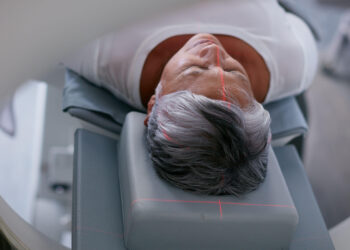TOPLINE:
Between 2006 and 2021, Sweden saw a dramatic rise in early-onset type 2 diabetes (T2D), with the prevalence more than doubling from 0.27% to 0.64% and incidence nearly doubling from 54 to 107 per 100,000 person-years. This increase was most prominent among individuals born outside Europe, those with lower educational attainment, and young women (aged 23-29 years).
METHODOLOGY:
- Researchers in Sweden followed 9,193,524 residents (49.8% men) born between 1895 and 1998 from 2006 to 2021 to analyse trends in the incidence and prevalence of T2D, specifically early-onset T2D.
- The diagnosis of T2D was identified via national linked health registers; the diagnosis made between the ages of 23 and 39 years was classified as “early onset.”
- The age-standardised incidence (per 100,000 person-years) and prevalence (%) of overall T2D and early-onset T2D were calculated and stratified on the basis of sex, region of birth, and education level.
- Prevalence projections for early-onset T2D through 2050 were generated by applying the 2021 age- and sex-standardised prevalence rates to official population forecasts.
TAKEAWAY:
- During the study period, 529,785 new cases of T2D were recorded, of which 24,210 were classified as early onset; the prevalence and incidence of early-onset T2D increased dramatically from 0.27% to 0.64% and from 54 to 107 per 100,000 person-years, respectively.
- The incidence of early-onset T2D rose rapidly in the youngest age group (aged 23-29 years) compared with that in the oldest age group (aged 35-39 years; 6.7% vs 3.6%), particularly among women.
- Both the prevalence and incidence of early-onset T2D were higher among individuals born outside Europe than among those born within Europe and higher among those with only primary education than among those holding higher‐level qualifications.
- If current trends persist, the prevalence of early-onset T2D is projected to reach 3.22% by 2050, with women outpacing men (4.29% vs 2.20%).
IN PRACTICE:
“The rise of early-onset T2D in Sweden signals an emerging threat to public health, as these patients have a high risk of complications and may face shortened life expectancy,” the authors wrote.
“As early-onset T2D affects individuals during their prime working, childbearing, and child-raising years, its impact is likely to be more far-reaching than T2D diagnosed later in life,” they added.
SOURCE:
This study was led by Sofia Carlsson, Institute of Environmental Medicine, Karolinska Institutet, Stockholm, Sweden. It was published online on July 09, 2025, in the European Journal of Public Health.
LIMITATIONS:
The authors could not analyse trends among individuals younger than 23 years. Data on the parental country of origin were lacking, preventing the assessment of the incidence of T2D in children of immigrants. Women were subject to stricter diagnostic criteria, requiring prescriptions for metformin plus an additional glucose-lowering drug to exclude polycystic ovary syndrome, which may have led to the underestimation of the prevalence of early-onset T2D in them.
DISCLOSURES:
This study was supported by grants from the Swedish Research Council, the Swedish Diabetes Foundation, and the Strategic Research Area for Diabetes at Karolinska Institutet. The authors reported having no relevant conflicts of interest.
This article was created using several editorial tools, including AI, as part of the process. Human editors reviewed this content before publication.
Source link : https://www.medscape.com/viewarticle/early-onset-t2d-rate-doubles-young-swedish-adults-2025a1000iog?src=rss
Author :
Publish date : 2025-07-17 12:00:00
Copyright for syndicated content belongs to the linked Source.














